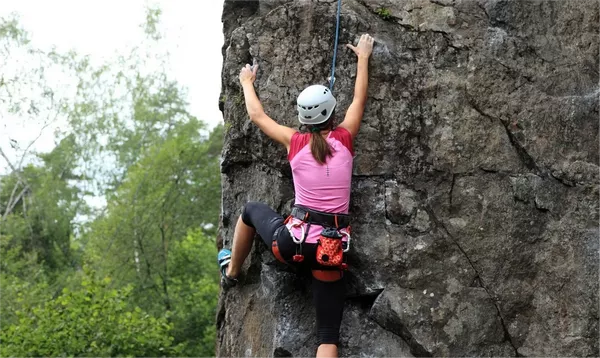Rock climbing is an exhilarating outdoor activity that demands both physical prowess and careful gear selection. Whether you’re scaling rugged cliffs or ascending boulders, wearing the appropriate clothing and equipment can significantly enhance your performance, comfort, and safety. In this comprehensive guide, we’ll delve into the essential considerations for dressing right for outdoor rock climbing.
Understanding the Basics
Before exploring specific clothing and gear options, it’s crucial to grasp the fundamental principles of outdoor rock climbing attire. The primary goals of your clothing choices should be:
1. Mobility: Your clothing should allow for unrestricted movement, enabling you to reach, stretch, and maneuver effectively.
2. Protection: Outdoor climbing exposes you to various elements like sun, wind, and rough surfaces. Your attire should shield you from these while ensuring durability.
3. Comfort and Breathability: Climbing often involves physical exertion, leading to sweat and heat buildup. Breathable fabrics that wick moisture away from your skin are essential.
4. Safety: Certain clothing choices can impact safety directly—for example, appropriate footwear and harnesses.
Essential Clothing for Outdoor Rock Climbing
1. Climbing Tops
Choose tops made from lightweight, moisture-wicking materials like synthetic blends or merino wool. Opt for long or short-sleeved shirts that allow flexibility in movement. Look for features like stretch panels or gussets under the arms for added mobility. Avoid baggy tops that can get in the way or catch on holds.
2. Climbing Bottoms
For bottoms, prioritize stretchy and durable pants or shorts. Climbing pants often have articulated knees and reinforced seat areas for added durability. Ensure they are fitted enough to not snag on rocks but not too tight to restrict movement. Some climbers prefer shorts for warm weather but make sure they are long enough to protect your legs.
3. Underlayers
Choosing the right underlayers is crucial for managing temperature and moisture. Moisture-wicking base layers (tops and bottoms) are excellent for maintaining comfort, especially in cooler conditions. Avoid cotton as it retains moisture and can lead to discomfort and chafing.
4. Outerwear
Depending on the weather, carry a lightweight, water-resistant jacket in case of rain or wind. Look for jackets that are breathable to prevent overheating during climbs. Consider a windbreaker or softshell jacket that offers protection without compromising mobility.
Selecting Climbing Accessories
Apart from clothing, certain accessories are essential for safety and comfort during outdoor climbs.
1. Climbing Shoes
Invest in a pair of snug-fitting climbing shoes designed for the type of climbing you intend to do—whether sport, trad, or bouldering. The shoes should provide good grip and sensitivity on rocky surfaces.
2. Harness
A well-fitted harness is critical for safety. Choose a harness that is comfortable for extended wear and features adjustable leg loops and waist belts.
3. Helmet
Always wear a climbing helmet to protect against falling rocks or other debris. Look for a lightweight, well-ventilated helmet that fits securely.
4. Chalk Bag
Carrying a chalk bag helps keep your hands dry for a better grip. Choose a chalk bag with a secure closure and a brush holder for cleaning holds.
5. Sunglasses
Protect your eyes from the sun’s glare and debris with sunglasses that are durable and stay secure during climbs.
Adapting to Different Conditions
Outdoor climbing often means facing varying weather conditions and terrain. Here’s how to adapt:
1. Hot Weather: Opt for light-colored, breathable clothing and ample sunscreen. Consider climbing early in the morning or late in the afternoon to avoid the midday heat.
2. Cold Weather: Layer up with insulating clothing and bring extra layers in your pack. Pay attention to extremities like hands and feet, which can get cold quickly.
Final Tips for Dressing Right
- Fit is Key: Clothing and gear should fit snugly without restricting movement.
- Avoid Cotton: Choose synthetic or wool fabrics that dry quickly and wick moisture.
- Layer Wisely: Dress in layers for flexibility in managing temperature changes.
- Check Weather Conditions: Always check the forecast and plan accordingly.
Conclusion
Selecting the right clothing and gear for outdoor rock climbing is essential for performance, comfort, and safety. By focusing on mobility, protection, comfort, and safety, you can enjoy your climbing adventures to the fullest. Remember to adapt your attire based on weather conditions and terrain, and always prioritize fit and functionality when choosing climbing clothing and accessories. With the right gear, you’ll be ready to conquer any climb with confidence and style.

